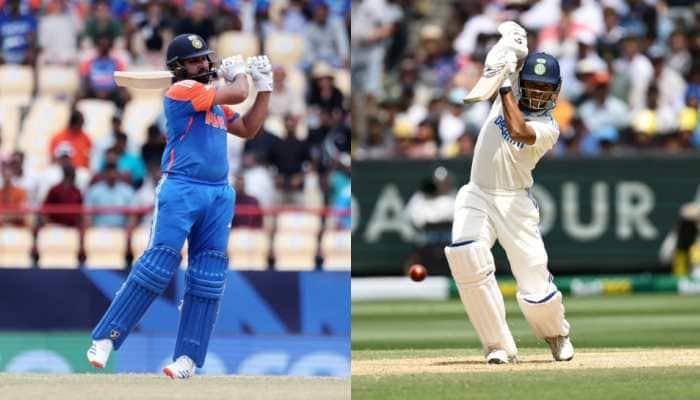Go, LIGO-India go where no one has gone before!
There is a scientific plan pending since 2011 for setting up a third detector and the first outside the US, in India.
Trending Photos
)
Pallava Bagla
New Delhi: Two American detectors created history when they a heard a blast from the past and if things go as per plan, India could be the home for a third similar listening post that would help unravel deep secrets of the universe.
The discovery of past murmurs from a 1.3 billion old cataclysmic collision of two black holes was heard by two super-sophisticated detectors located in America; this sound of merging black holes led a team of over a 1,000 scientists to discover what are called gravitation waves, a true perturbation in the fabric of space and time.
It is hailed as the discovery of a century. It also proves what the genius physicist Albert Einstein had theoretically predicted almost a century ago.
There is a huge India connect to this discovery, there are many Indian institutions like the Raman Research Institute, Bengaluru among others which have directly contributed to this landmark finding.
However, if only the Indian government had acted in a timely manner, India could well have heard the same murmurs as well.
There is a scientific plan pending since 2011 for setting up a third detector and the first outside the US, in India.
The chirp which heralded the arrival of gravitation waves could well have turned into a roar, had the Indian government been quick in its decision-making.
While the United Progressive Alliance (UPA) government led by Prime Minister Manmohan Singh gave an in-principle clearance in 2014 but it failed to allocate funds for this mega-science project.
In contrast, seizing the opportunity of this huge discovery, the space buff in Prime Minister Narendra Modi within 20 minutes of the global announcement gave a statement that has gladdened the Indian scientific community.
Modi said, "Historic detection of gravitational waves opens up new frontier for understanding of universe! Immensely proud, that Indian scientists played an important role in this challenging quest. Hope to move forward to make even bigger contribution with an advanced gravitational wave detector in the country."
Its his last sentence that makes the Indian astronomy community feel buoyant that the dream of having a third Laser Interferometer Gravitation Wave Observatory (LIGO) detector in India could well be a reality.
The global community is already pitching for it,well-known astrophysicist Shrinivas R Kulkarni from California Institute of Technology (CALTECH), US, one of the host institutes of the global effort, says, "Modi ji, please allocate money for this very important Indian LIGO project and I know it is under consideration, this will be money well spent. It will uplift physics departments across the country, lots of new technologies, precision laser and powerful laser technology could flow to India. It will globalise Indian science."
It was only in 2014 that India decided to log into detecting the most elusive of all characters of mass, space and time, the gravity waves. Known to exist since Einstein postulated them in 1916 as part of the theory of general relativity but they have been difficult to unravel till last week's landmark discovery.
Speaking in the midst of 8,000 scientists in 2014 at the inaugural session of the Indian Science Congress in Jammu, the then Indian Prime Minister Manmohan Singh surprised many by saying, "In the gravitational wave experiment, India intends to host the third detector."
Special giant laser detectors operating since 2001 in the US at Hanford in Washington and Livingston in Louisiana, work over time detect these waves. Yet the global astronomical community wanted another detector to be placed far away from the ones in America. Postulating that through this triangulation the source of the gravitation waves as they emerged in the cosmos could be better pinpointed.
Funded by the US National Science Foundation and spearheaded by Caltech a USD 140 million Laser Interferometer Gravitational-Wave Observatory (LIGO) is proposed to be placed in India, the location is yet to be finalised, but sites in Rajasthan and Maharashtra have been surveyed.
The detector would be an L-shaped vacuum tube which extends 4 km on each arm through which a high intensity laser beam is bounced back and forth between mirrors and variations and perturbations in the light caused by gravitation waves are detected.
The Indian project called Ligo-India or also referred sometimes as IndiGo would be almost identical to the detectors that detected the gravitation waves on September 14, 2014 in America.
The global community got very excited by this Indian announcement especially since an earlier effort to put a similar observatory in Australia failed in 2012, as the host country could not rustle up the funding.
Hope has been awakened since Modi has logged into the LIGO-India project and gotten excited as it could a shining example of a 'Make in India' effort.
Scientists familiar with the project suggest that the Indian government is likely to commit about Rs 1000 crore funding for the Indian LIGO effort over the next 15 years, it is being spearheaded by the Department of Atomic Energy.
Some researchers have always worried that finding a vacant plot of land low on ambient noise that can house the giant detector in a country with high population density having a total population of 1.25 billion is going to be a big challenge.
Countering the nay sayers, Ratan Kumar Sinha, nuclear engineer and then chairman Atomic Energy Commission, Mumbai told the Science magazine, "LIGO will bring some of the best international and Indian astrophysicists to work on the Indian soil on a very exciting area of research aiming to verify a very important aspect of Einstein's general theory of relativity. The investment of USD 201 million will directly benefit our industry and our student community." India already has a lead.
Indian scientists like Sanjeev Dhurandhar and Satya Prakash both then at the Inter University Center for Astronomy and Astrophysics, Pune more than a decade ago deduced the algorithms or the mathematical formula based on which the signal could be detected from the background noise.
Not an easy achievement since the 'chirp' of the merging black holes was heard for just few milli-seconds in years of observation that led to the discovery of gravitation waves. In all about 37 Indian scientists and about 23 non-resident Indian scientists have contributed on this big discovery.
Kulkarni says, "India's contribution to the detection of gravitation waves should be recognised in a Nobel Prize when it is awarded."
Meanwhile, the Indian scientific community hopes that the Indian cabinet will clear the proposal at the earliest and the finance minister allocates some funds in the upcoming budget. Till then keep listening to the rare celestial music of merging black holes.
Stay informed on all the latest news, real-time breaking news updates, and follow all the important headlines in india news and world News on Zee News.
Live Tv







)
)
)
)
)
)
)
)
)
)
